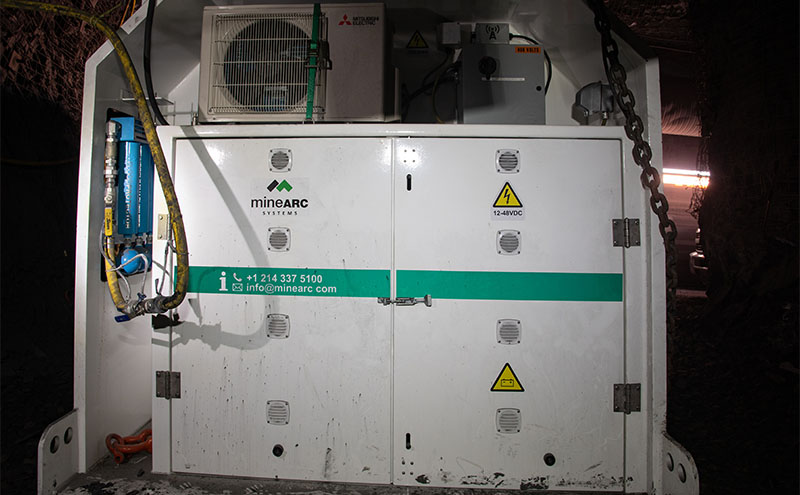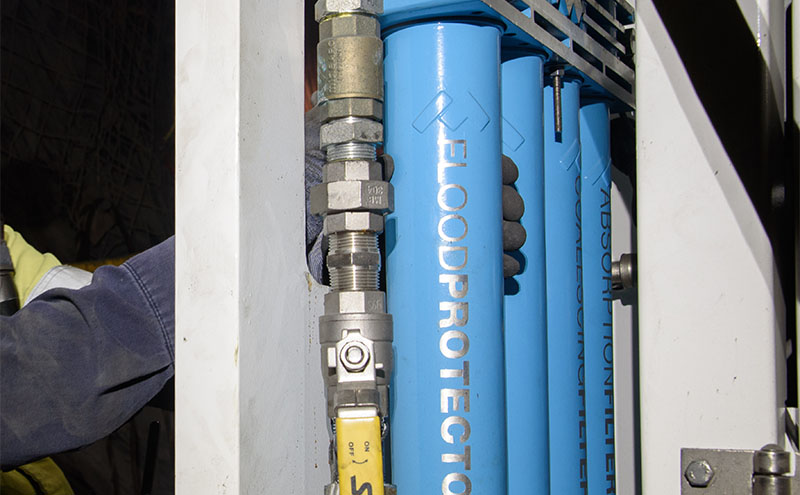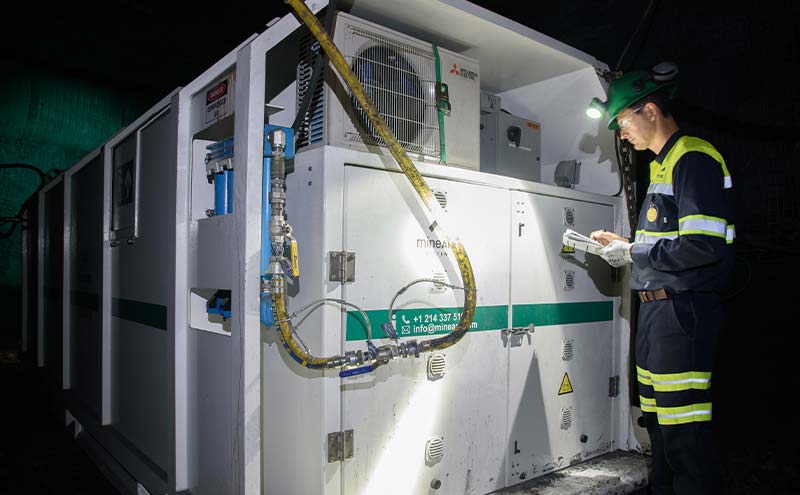During emergencies and daily operations, refuge chambers operate in externally supported mode. This state occurs when a refuge station is active and remains connected to primary utilities.
Externally supported mode is the first stage of operation, as there is no disruption to normal air, water, or electrical services.
These will continue to be accessed from the site until the chamber is required to transition to stand-alone mode.
It is important to note that not all portable refuge chambers will be connected to mains power. More compact shelters generally located near blast works are often positioned without an external supply due to relocating frequency.
Why Does a Refuge Chamber Have an Externally Supported Mode?
A refuge chamber without external utilities can be very costly. A safe refuge must be primed with the ability to power all the systems within the chamber to ensure it is always emergency ready. Continuously relying on independent systems, such as batteries, can drain resources quickly.
An externally supported refuge station can remain in standby mode during daily operations and be active during emergencies.
Externally Supported Requirements for Emergency Refuge Chambers
Upon commissioning, an emergency refuge chamber is connected to a primary compressed air and power supply. It is supported by external utilises to maintain the operation of the shelter.
Critical points for externally supported mode include:
- Connected to the main power supply
- Connected to a continuous air supply
- Extended duration
Main Power Supply to a Refuge Chamber
Power to a refuge station is supplied via the on-site electrical system when a shelter is externally supported. This mode ensures there is a consistent source of energy to power the main life-support systems, including gas monitoring, chemical scrubber, control systems, and air conditioner.

"Externally supported mode is the first stage of operation, as there is no disruption to normal air, water, or electrical services."
Externally Supported Mode: Understanding Refuge Chambers Tweet
Continuous Air Supply to Emergency Ready Refuge Stations
Refuge stations require breathable air sources as they are sealed environments.
Air supplied to a fixed or portable refuge chamber is primarily sourced from a dedicated compressed air line. It should be separated from possible contaminant sources, and identifiable to reduce the accidental connection of a water line.
Preferably, this line should be from an oil-free source. However, air filtration systems, such as the Compressed Air Management Systems (CAMS), can aid in purification if it is drawn from a lubricated piston, oil-injected screw or sliding vane-type machine.
Compressed air delivery can be noisy and requires noise suppression measures to maintain a comfortable environment. There will still be some noise from the system; however, this is not a reason to stop the airflow.
MineARC Refuge Chambers conform to the Australian Standard AS/NZS 1716 Respiratory Protective Devices.
Air Supply to Reduce Gas Ingress
The rate of airflow should be set to maintain a small overpressure within the chamber. This positive pressure helps reduce smoke and other gases entering the refuge chamber.
Refuge stations should be equipped with pressure-venting systems with immediate self-sealing capability. Pressure can safely be released if above the maximum design airflow or if the external atmospheric pressure exceeds the pressure in the chamber.

Extended Duration of Refuge Chamber Occupancy
A refuge chamber, while connected to mains power and air, can continue to sustain life indefinitely. Occupants can remain in the chamber as the vital life-supporting systems can continue to operate. However, in these instances, the supply of food and water becomes more pressing.
In comparison, stand-alone mode occurs when the refuge chamber is cut from its external air and power sources, resulting in the use of a finite source of battery backup and breathable air. Minimum refuge station duration can range from 24 -96 hours and depends on the industry, region, and risk.






